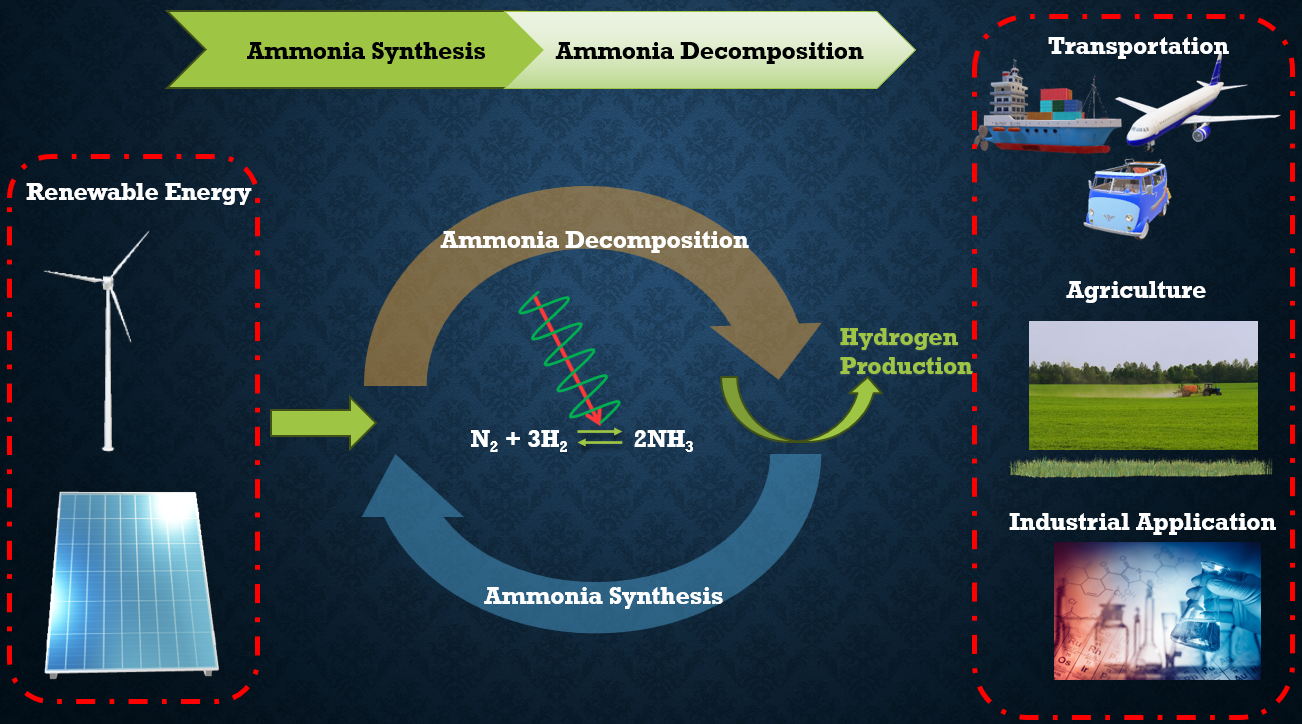(616a) Microwave-Induced Synthesis of Green Ammonia As a Hydrogen Carrier: A Complete Cycle from Synthesis to Decomposition
AIChE Annual Meeting
2024
2024 AIChE Annual Meeting
Topical Conference: Decarbonization of the Chemical Industry through Electrification
Decarbonization by Electrification: Thermal Reactors and Reactions II
Wednesday, October 30, 2024 - 3:35pm to 3:53pm
Ammonia has attracted significant attention recently due to its unique capability to store and transport renewable hydrogen energy without emitting carbon dioxide. According to the U.S. Department of Energy (DOE), ammonia is categorized as a carbo-neutral liquid fuel when produced from renewable energy sources. On a large industrial scale, ammonia is produced through the Haber-Bosch (HB) process that operates at high temperatures and pressure. The scale-down of the HB process to meet renewable energy requirements will significantly increase the cost of ammonia production. As a result, the search for innovative modular technology adaptable to renewable energy sources is crucial. Microwave technology is adept at producing renewable hydrogen energy due to its unique compatibility with intermittent renewable energy sources. This unique ammonia production using microwave technology is paramount in expanding carbon-neutral hydrogen production while mitigating the current climate crisis.
In our study, we performed a complete cycle of renewable hydrogen production using ammonia as a carrier. Our research study comprises two phases, the first step is focused on ammonia synthesis, while the second step is on ammonia decomposition for hydrogen generation. In this two-phase cycle, the integration of microwave technology and a novel electromagnetic susceptible catalyst that is active and durable for both phases is the core innovation. The employment of microwave technology is unique and promising simultaneously as the heating mechanism is selective and efficient, lowering various reaction conditions such as activation energy, time, temperature, and pressure overcoming the thermodynamic limitations. Developing novel dielectric Cs-Ru/CeO2 catalysts is also pivotal in achieving green hydrogen under microwave reaction conditions. Ru is chosen as the active metal catalyst due to its superior catalytic activity at lower temperatures than traditional Iron-based catalysts. However, Ru is an expensive rare earth metal and must be supported. CeO2 is promising support for Ru metal due to its reversible oxidation while Cs is selected as a promoter owing to its high electro-positivity. This novel approach produced ammonia at low temperatures and pressure, while this same catalyst demonstrated efficacy in decomposing ammonia under microwave irradiation.
In our comprehensive study on renewable hydrogen production via ammonia as an energy carrier, ammonia was synthesized at a notably lower temperature of 260 °C, less than 20 bar under microwave irradiation compared to 400-500 °C, 250-300 bars in a traditional thermal fixed-bed reactor over a Cs-Ru/CeO2 catalyst. In the subsequent phase of ammonia decomposition, the same catalyst was washed-coated onto SiC foam, achieving complete ammonia decomposition at a low temperature of 360 °C, yielding a substantial hydrogen production rate.
